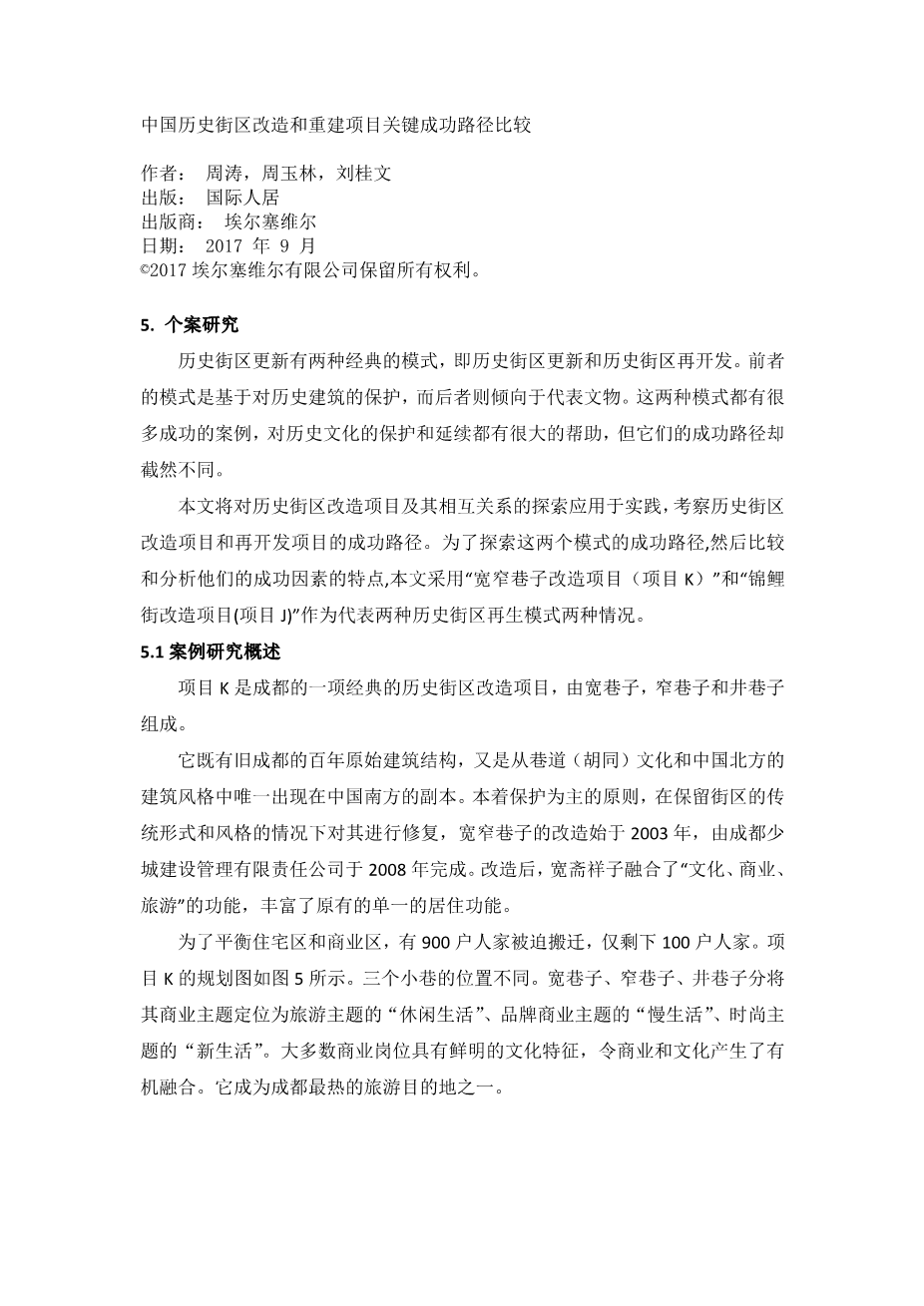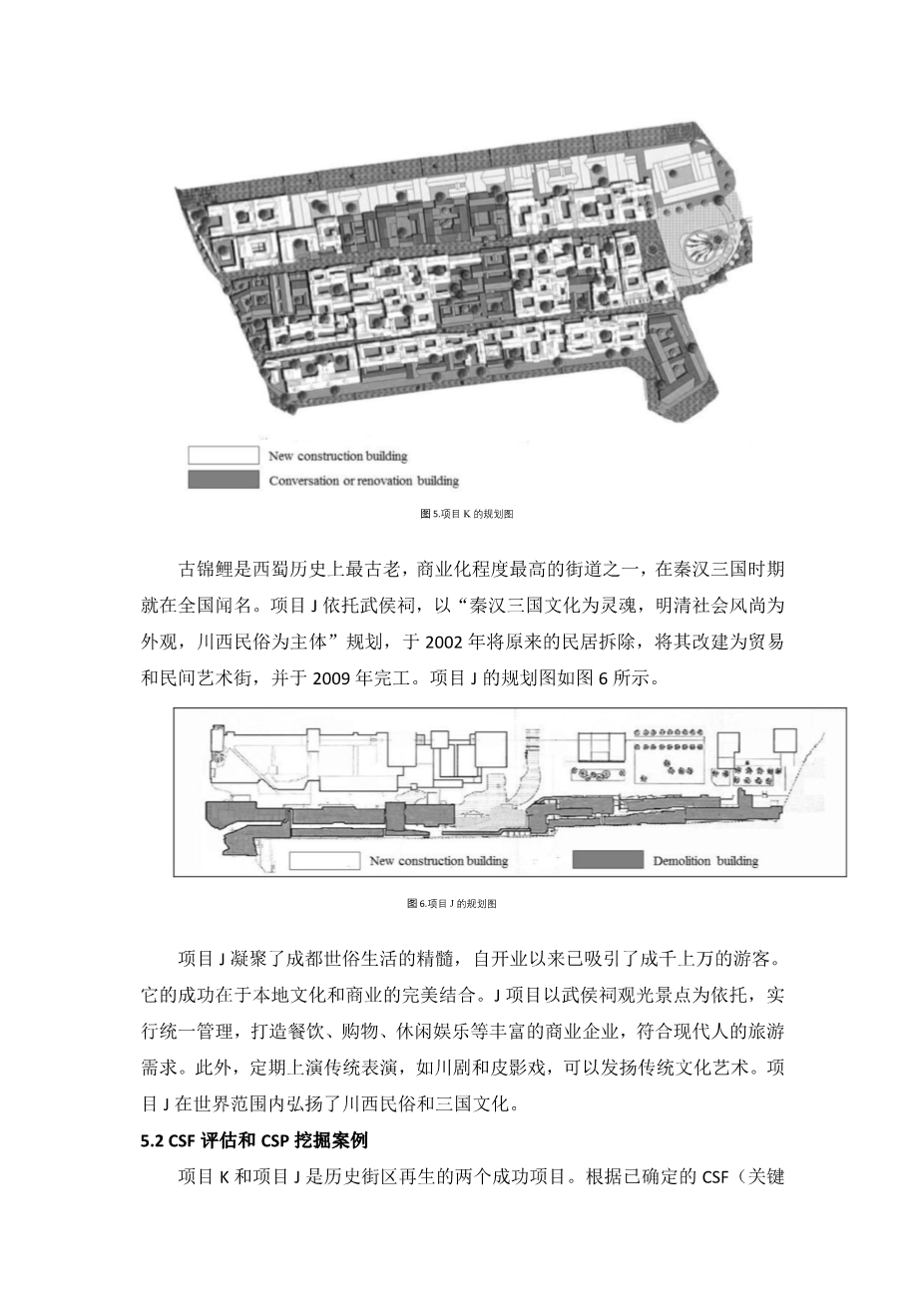Comparison of critical success paths for historic district renovation and redevelopment projects in China
Author: Tao Zhou,Yulin Zhou,Guiwen Liu
Publication: Habitat International
Publisher: Elsevier
Date: September 2017
copy; 2017 Elsevier Ltd. All rights reserved.
5. Case study
There are two classic modes of historic district regeneration,
namely Historic District Renovation and Historic District Redevel-opment. The former mode is based on the preservation of historical buildings, while the latter model tends to represent cultural relics.These two modes have many successful cases and can be of great help to historic and cultural protection and continuity, but they exhibit distinctly different success paths.
The exploration of CSFs and their inter-relationship is applied in practice, examined, and the success path of historic district reno-vation projects and redevelopment projects is derived. In order to
explore the success path of these two modes and then compare and analyze characteristics of their success factors, this paper takes the“Kuanzhai Xiangzi Renovation Project (Project K)” and the “JinliStreet Redevelopment Project (Project J)” as two cases representing two modes of historic district regeneration.
5.1. Cases study overview
Project K is a classical Historic District Renovation project in Chengdu, composed of Kuan Xiangzi, Zhai Xiangzi and Jing Xiangzi. It is not only the last city relic of a “thousand-year-old young city”with the one-hundred-year original architectural structure of old Chengdu, but also is the only existing copy in southern China from the lane (Hutong) culture and the architectural style of northern China. Based on the guiding principles of “conservation-base,keeping old styles while repairing, retaining former site and orig-inal form in reconstruction of old buildings that fell apart”, the harmonious renovation of Kuanzhai Xiangzi was started in 2003 and completed in 2008 by Chengdu Less-city Construction Man-agement Limited Liability Company. After renovation, Kuanzhai Xiangzis old single residence function was replaced and enriched to mix the functions of “culture, commerce and tourism”.
To balance the residential and business areas, 900 households were forced to move out and only 100 households remained. The planning map of Project K is shown in Fig. 5. Three alleys have different positioning. Kuan Xiangzi, Zhai Xiangzi and Jing Xiangzi position their commercial form as “leisure life” with a tourism theme, “slow life” with a brand business theme, and “new life” with a fashion theme, respectively. Project K has rich and diverse com-mercial formats with high-end experience-based brands. Most of the merchant positions have distinctive cultural characteristics,leading to organic commercial and cultural integration. It became one of the hottest tourist destinations in Chengdu.
The ancient Jinli was one of the oldest and the most commer-cialized streets in the history of West Shu and had been well-known throughout the country in the Qin, Han, and Three King-doms Periods. With Qin, Han, and Three-kingdom cultures as its soul, the social style of the Ming and Qing dynasties as its appearance, and the West Sichuan folkways and customs as its body, the new Project J, supported by Wuhou Shrine, has been
rebuilt into a trading and folk art street with the demolition of
original folk dwelling houses in 2002, which was completed in 2009. The planning map of Project J is shown in Fig. 6.
Project J condenses the essence from the worldly life in Chengdu
and has attracted thousands of tourists since its opening. Its success lies in the perfect combination of local culture and business. With the sightseeing attraction of the Wuhou Shrine, Project J exercises unified management and creates rich commercial enterprises, such as catering, shopping, leisure and entertainment, in line with modern tourism needs. In addition, the traditional performances, Sichuan Opera and shadow play, are staged regularly, which can carry forward traditional culture and arts. Project J is the world scene to expand the culture of the Three-kingdom and customs of West Sichuan.
5.2. CSFs evaluation and CSPs excavation of cases
Project K and Project J are two successful projects in historic
district regeneration. On the basis of the identified CSFs, an expert
workshop was held to discuss the CSPs of the two cases. The expert group consisted of two case-related government officers, two real estate developers, and one planner who participated or are very familiar with the projects. An appropriate time and place for the workshop should be selected first, and then experts gathered to convene a symposium, with a table distributed to them. The table is designed with the 29 CSFs identified above to be judged in a 5-point Likert scale (from 1 frac14; strongly unimportant to 5 frac14; strongly important, representing the value of each factor). After receiving a simple explanation of the problem, i.e., exploring the success path of a specified project, the brainstorming group should discuss to reach a consistent result according to their own experiences and ideas.
The five experts jointly determined each factor contributing to
the success of the two projects. The higher the contribution value,the bigger the factor score is assigned. The CSF evaluation results of the two case studies are shown in Table 2. Based on the ISM of the CSFs, there are many paths to making the project a success, while the CSPs must have the biggest contribution value. Therefore, the way to specify the projects CSPs is to calculate the standardized contribution value of all CSFs for each path.
A success path is a factor chain from the factor without an antecedent set to a factor without a reachable set based on the relationship between factors. The
剩余内容已隐藏,支付完成后下载完整资料


英语译文共 9 页,剩余内容已隐藏,支付完成后下载完整资料
资料编号:[605492],资料为PDF文档或Word文档,PDF文档可免费转换为Word
课题毕业论文、文献综述、任务书、外文翻译、程序设计、图纸设计等资料可联系客服协助查找。


